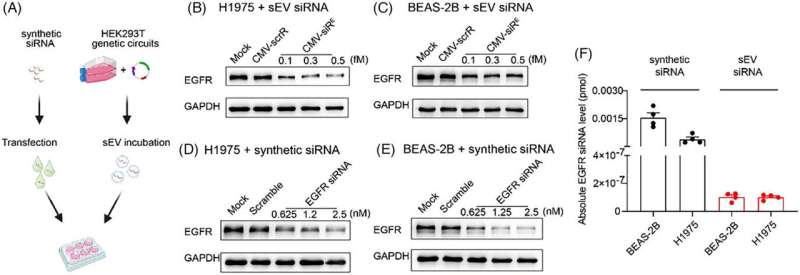This article has been reviewed according to Science X's editorial process and policies. Editors have highlighted the following attributes while ensuring the content's credibility:
fact-checked
proofread
Evaluation of on- and off-target effects of self-assembled EGFR siRNA delivery system

In a study published in the Clinical and Translational Medicine, a Nanjing University research group evaluated the on- and off-target effects of self-assembled siRNA delivery system.
RNA interference (RNAi) therapy involves the delivery of small interfering RNA (siRNA) to target cells to elicit therapeutic effects. Although siRNA exhibits specific binding to the target gene for on-target effects, it may also interact with non-target genes, resulting in off-target effects. Thus, one of the key challenges in RNAi therapy lies in achieving a balance between on-target and off-target effects to enhance the desired on-target impact while minimizing the associated off-target risk.
The Nanjing University research group, of Chen-Yu Zhang and Xi Chen, developed a unique siRNA delivery approach by reprogramming the host liver to synthesize self-assembling siRNAs encapsulated within small extracellular vesicles (sEVs) for delivery to specific tissues to treat various diseases.
In this study, the authors further investigated the on- and off-target effects of the self-assembled siRNA delivery system, addressing challenges of in vivo siRNA delivery and highlighting its therapeutic potential and biosafety. They emphasized the superior potency of the self-assembled siRNAs in silencing specific targets compared to synthetic siRNAs.
Transcriptomic analysis further confirmed minimal off-target effects in normal tissues and significant anti-EGFR effects in tumor cells in vivo. Overall, the study provides promising insights into the therapeutic efficacy and side effects of the in vivo self-assembled siRNA delivery system.
Significance of the findings
This study has unveiled the impressive efficacy of self-assembled sEV-encapsulated siRNA, which exhibited potent interference on EGFR protein with only 1/2,000,000 of the synthetic transfection amount. This revelation indicate that the endogenously processed sEV-encapsulated siRNAs seamlessly function within recipient cells at physiological levels, while the accumulation of supraphysiological levels of synthetic siRNAs in normal cells may cause cytotoxicity.
Therefore, the in vivo self-assembled siRNA delivery strategy is not only effective at a quite low siRNA concentration in tumor cells, but also exhibit better biosafety to somatic cells than synthetic siRNAs.
The off-target activity of siRNAs can lead to unforeseen phenotypes and compromise the therapeutic advantages of siRNAs. This study meticulously assessed the off-target risks of in vivo self-assembled EGFR siRNAs through transcriptomic sequencing.
No statistically significant enrichment for perfect matches between the EGFR siRNA seed region and 3'-UTRs of downregulated transcripts was observed in normal tissues. In tumor tissue, gene ontology (GO) enrichment analysis revealed that most of the top GO terms were closely associated with EGFR signaling. The data indicates that the off-target effects in normal tissues are minimal compared to the on-target effects observed in tumor cells.
Regarding the potential risks associated with saturation of the endogenous miRNA machinery by exogenous siRNAs, analysis of miR-122 target genes post in vivo self-assembled siRNA treatment revealed only 13 significant changes among 1,566 potential targets.
The majority of miR-122 targets exhibited similar expression patterns compared with untreated group. These data indicate that in vivo self-assembled EGFR siRNAs are present at appropriate physiological levels and have little chance of causing hepatotoxicity through perturbations in the intrinsic miRNA pathways.
Overall, this study signifies a novel direction for RNAi therapy, holding significant implications for the clinical adoption of the in vivo self-assembling siRNA delivery system.
In contrast to conventional gene therapy, this method demonstrates high specificity with minimal off-target risks and no toxic side effects. Additionally, the study offers new insights for assessing established and non-established side effects in the development of in vivo siRNA therapy for diverse genes.
More information: Hongyuan Guo et al, Evaluation of on‐ and off‐target effects of self‐assembled epidermal growth factor receptor small interfering RNA delivery system, Clinical and Translational Medicine (2024). DOI: 10.1002/ctm2.1579
Provided by Nanjing University School of Life Sciences




















